Morning meals once held a special place in the rhythm of American life, offering both nourishment and a comforting sense of routine. In decades past, grandparents and great-grandparents rose early to prepare hearty breakfasts that were anything but fancy—think biscuits made from scratch, sizzling bacon cooked over cast-iron skillets, and generous helpings of oatmeal or grits. These meals, rooted in simplicity and tradition, were designed to fuel a full day of labor, whether on a farm, in a factory, or around the home. The food was practical, satisfying, and often shared around a family table before the sun had fully risen.
Today, the landscape of breakfast has shifted dramatically. Fast-paced lifestyles, convenience culture, and evolving tastes have pushed many of these beloved dishes into obscurity. While some classics like pancakes and eggs endure, others have been replaced by protein bars, drive-thru meals, or skipped entirely. As we embrace modern efficiency, it’s worth pausing to remember the breakfasts that shaped generations—meals that spoke of resilience, community, and the comforting aroma of something warm on the stove. Let’s revisit some of those forgotten morning traditions and celebrate the dishes that once defined the American start to the day.
1. Scrapple With Eggs
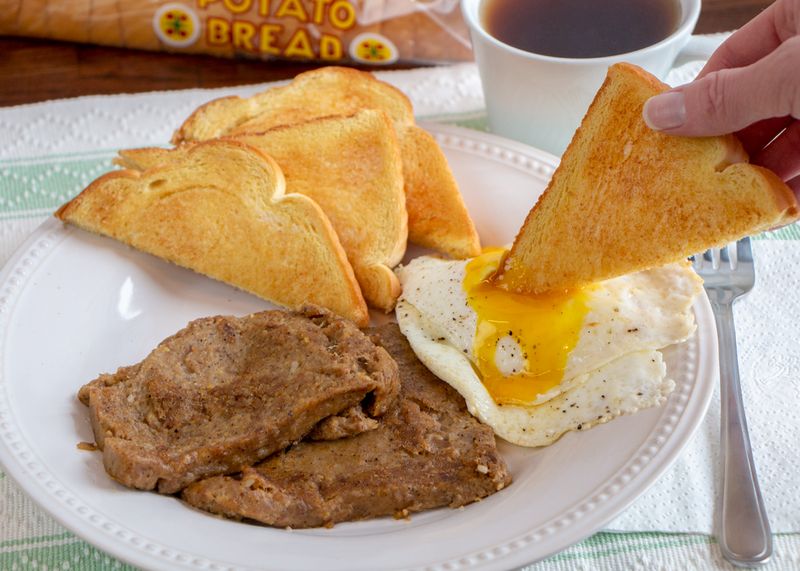
Pennsylvania Dutch families knew how to make every part of the pig count for something delicious. Ground pork scraps mixed with cornmeal and spices created this protein-packed breakfast staple that sustained farming communities for generations.
Modern grocery stores rarely stock authentic scrapple anymore. Most younger Americans have never tasted this crispy-outside, tender-inside delicacy that once graced breakfast tables across the Mid-Atlantic region.
Finding real scrapple today requires visiting specialty butcher shops or Pennsylvania Dutch markets. The art of making it from scratch is becoming a lost skill in most American households.
2. Cornmeal Mush With Syrup

Before instant oatmeal packets existed, families cooked cornmeal slowly into a creamy, warming porridge. This humble breakfast required patience and stirring but provided lasting energy for hard-working families on tight budgets.
Children would eagerly wait for the sweet maple syrup or molasses to be drizzled over their steaming bowls. The simple combination of ground corn and sweetener created comfort food that satisfied hungry stomachs throughout the morning.
Today’s rushed breakfast routines have largely forgotten this slow-cooked treasure. Few modern cooks take time to stir cornmeal into the perfect creamy consistency their ancestors mastered.
3. Buckwheat Pancakes

Dark, nutty, and incredibly filling, buckwheat pancakes were the weekend breakfast kings of rural America. Farmers appreciated how these hearty cakes provided sustained energy for demanding physical labor throughout long days.
Unlike today’s fluffy white pancakes, buckwheat versions had distinctive earthy flavors and denser textures. Families would grind their own buckwheat flour, creating batters that produced robust pancakes with character and substance.
Restaurant menus today rarely feature authentic buckwheat pancakes. Health food stores sometimes carry buckwheat flour, but most home cooks have never experienced the satisfying richness of these traditional morning treats.
4. Poached Eggs On White Toast

Mastering the perfect poached egg was considered essential cooking knowledge for every housewife. The technique required skill, timing, and practice to achieve those silky whites surrounding golden, runny yolks.
Simple white bread toast provided the perfect foundation for this elegant yet accessible breakfast. The combination represented refined home cooking that didn’t require expensive ingredients or complicated recipes.
Today’s breakfast preferences lean toward scrambled eggs or breakfast sandwiches. The gentle art of poaching eggs has become intimidating for many modern cooks who prefer quicker, more foolproof preparation methods.
5. Creamed Chipped Beef On Toast

Military mess halls made this hearty breakfast famous, though soldiers had less flattering nicknames for the dish. Dried beef in rich cream sauce over toast provided substantial nutrition for active servicemen and their families.
Homemakers appreciated how dried beef kept well without refrigeration, making this breakfast both practical and economical. The creamy sauce transformed simple ingredients into something that felt indulgent and satisfying.
Contemporary breakfast menus avoid this once-popular combination entirely. Younger generations associate cream sauces with dinner rather than morning meals, and dried beef has largely disappeared from most grocery stores.
6. Codfish Cakes And Breakfast Potatoes

New England fishing communities transformed leftover salt cod into crispy breakfast cakes that paired beautifully with fried potatoes. These protein-rich patties provided fishermen with energy for long days on the water.
Families would soak salt cod overnight, then mix it with mashed potatoes and seasonings before forming patties. The combination created satisfying breakfast fare that used affordable, preserved fish available year-round.
Fresh cod has become expensive, and salt cod requires advance planning that doesn’t fit modern lifestyles. Most Americans today have never tasted these traditional coastal breakfast treats that once sustained entire communities.
7. Grits With Butter And Cheese

Southern breakfast tables weren’t complete without a steaming bowl of creamy grits enriched with butter and cheese. This corn-based porridge provided comfort and sustenance that perfectly complemented eggs, bacon, and biscuits.
Proper grits required slow cooking and frequent stirring to achieve the ideal smooth, lump-free consistency. Families took pride in their grits-making skills, passing down techniques for achieving perfect texture and flavor.
Outside the South, grits remain largely unknown to many Americans. Even within traditional grits territory, instant varieties have replaced the slow-cooked versions that once required patience and attention to detail.
8. Fried Bologna And Eggs

Working-class families stretched their breakfast budgets with thick slices of fried bologna alongside scrambled eggs. The combination provided substantial protein without breaking the bank during economically challenging times.
Smart cooks would score the bologna edges to prevent curling, creating perfectly flat rounds that cooked evenly. The salty, smoky flavors paired wonderfully with eggs and provided satisfying morning fuel for physical laborers.
Today’s health-conscious breakfast trends have largely abandoned processed meats like bologna. Most modern families prefer turkey bacon or chicken sausage, leaving this once-common breakfast combination in the past.
9. Hot Buttered Raisin Toast
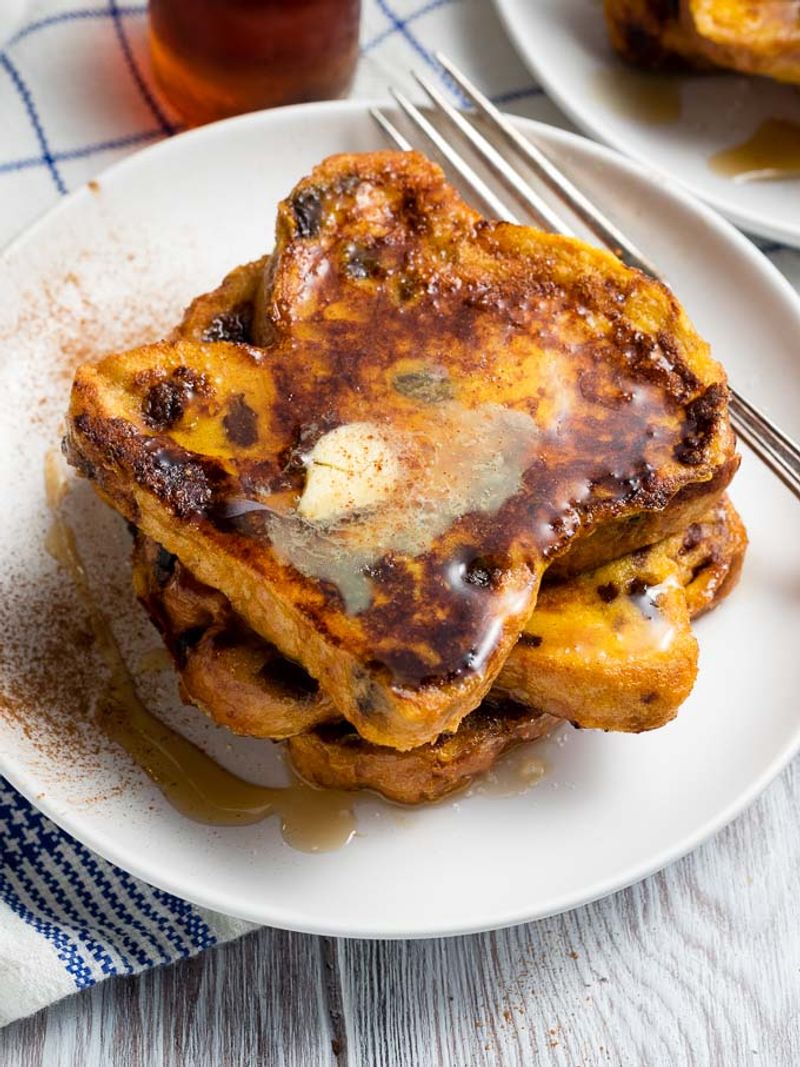
Before fancy breakfast pastries became popular, families enjoyed simple pleasures like thick slices of raisin bread toasted golden and slathered with real butter. The sweet raisins provided natural fruit flavors that satisfied morning sweet tooth cravings.
Homemade raisin bread was often baked weekly, filling kitchens with wonderful aromas of cinnamon and yeast. Toasting brought out the bread’s sweetness while the butter added richness that made this simple breakfast feel special.
Modern breakfast preferences favor yogurt parfaits or granola bars over traditional toasted breads. The time-consuming process of making raisin bread from scratch has been largely forgotten by busy contemporary families.
10. Ham Steak With Pineapple Ring

Diners across America featured this sweet-and-salty combination that epitomized mid-century breakfast sophistication. The thick ham steak provided substantial protein while the pineapple ring added tropical sweetness that felt exotic and modern.
Short-order cooks would grill both components on the same flat-top, allowing the pineapple juices to caramelize and complement the ham’s smoky flavors. This combination represented prosperity and abundance during America’s post-war economic boom.
Contemporary breakfast menus rarely feature ham steaks, and canned pineapple rings seem dated to modern diners. Health concerns about processed meats have further pushed this once-popular combination into breakfast history.
11. Jelly Omelet

Victorian-era breakfast tables featured this surprisingly sweet take on eggs that combined French cooking techniques with American preferences for fruit preserves. Delicate omelets were folded around spoonfuls of homemade jelly or jam.
Skilled cooks took pride in creating paper-thin omelets that showcased their culinary abilities. The contrast between savory eggs and sweet preserves created unique flavor combinations that satisfied both breakfast and dessert cravings simultaneously.
Modern breakfast sensibilities find sweet omelets confusing and unappealing. Contemporary omelet fillings focus on vegetables, meats, and cheeses, making this once-elegant breakfast preparation seem completely foreign to today’s diners.
12. Stewed Prunes
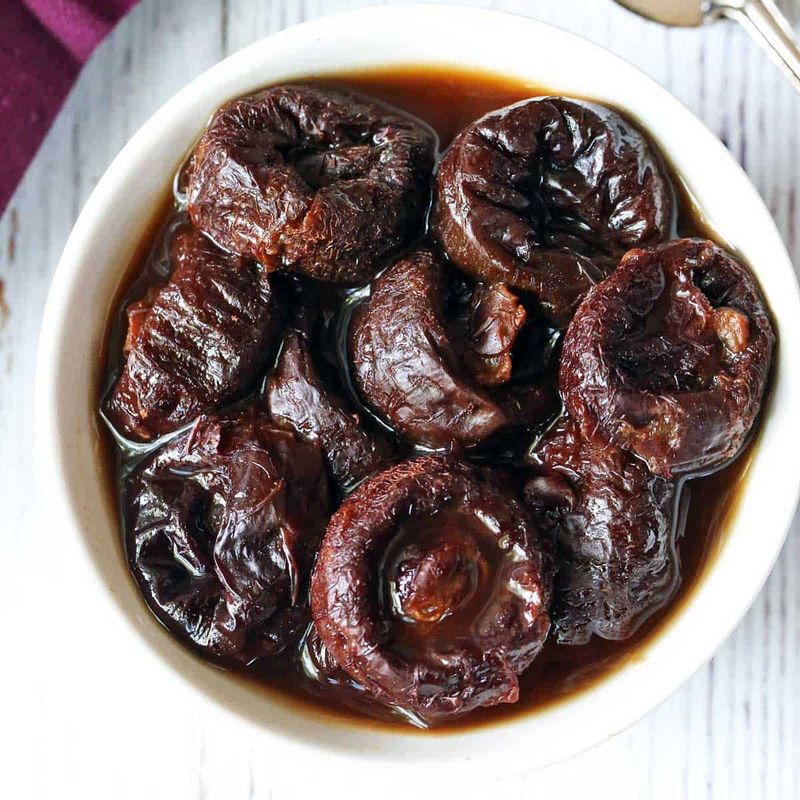
Grandmothers insisted that stewed prunes were essential for proper digestion and overall health. These wrinkled fruits were slowly cooked in sugar syrup until tender, creating a breakfast side dish that was both medicinal and surprisingly tasty.
Families would prepare large batches on Sunday evenings, ensuring everyone had their daily portion throughout the week. The sweet, jammy consistency made even reluctant children more willing to consume their healthy breakfast requirement.
Modern Americans associate prunes with elderly people and digestive issues rather than delicious breakfast foods. The stigma surrounding prunes has completely eliminated them from most contemporary breakfast routines, despite their nutritional benefits.
13. Tomato Gravy Over Biscuits

Southern cooks created this ingenious breakfast when meat was scarce but tomatoes were abundant. Ripe tomatoes were cooked down with flour and seasonings to create a rich, savory gravy that transformed simple biscuits into satisfying meals.
Depression-era families relied on this economical combination that provided filling nutrition without expensive ingredients. The tangy tomato flavors paired surprisingly well with buttery biscuits, creating comfort food that sustained families through difficult times.
Today’s breakfast preferences rarely include tomato-based sauces, and most people associate gravy with sausage rather than vegetables. This once-common Southern breakfast has virtually disappeared from modern tables and restaurant menus.
14. Cold Rice With Milk And Sugar
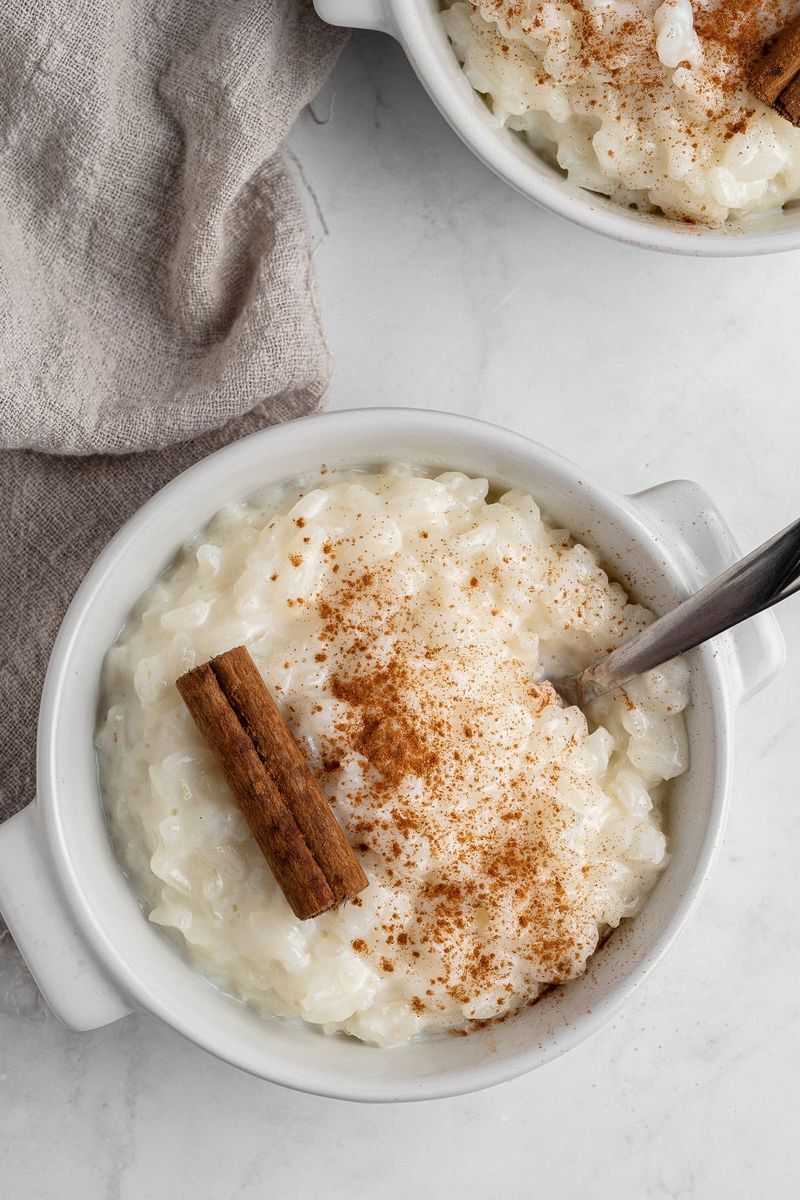
Frugal families never wasted leftover rice from dinner, transforming it into next morning’s breakfast with simple additions of milk and sugar. This practice exemplified Depression-era resourcefulness that ensured no food was ever thrown away.
Children actually looked forward to this sweet, creamy breakfast that felt like eating dessert in the morning. The combination provided carbohydrates and dairy nutrition while using ingredients that were always available in most households.
Contemporary breakfast culture emphasizes fresh, hot foods over leftovers repurposed from previous meals. The concept of eating yesterday’s rice for breakfast seems unappetizing to most modern families who prefer convenience foods.
15. Liver And Onions
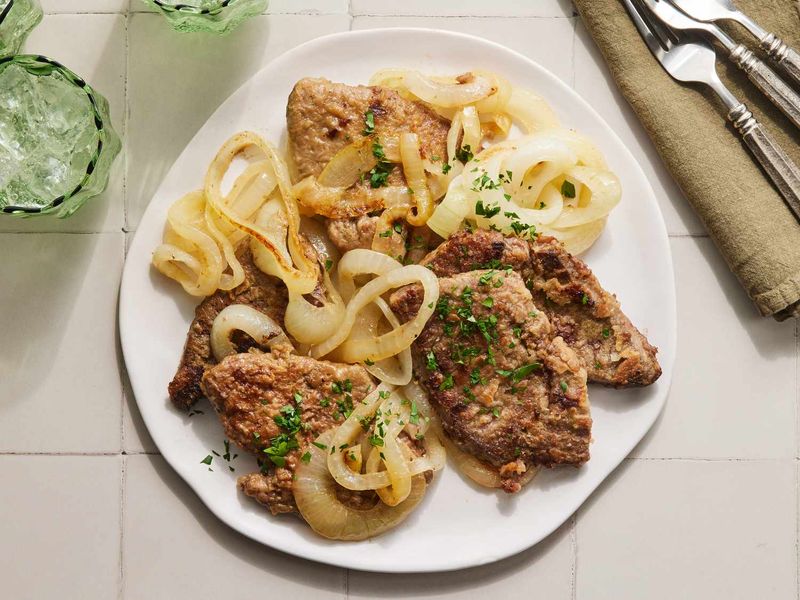
Before vitamin supplements existed, mothers served liver and onions for breakfast to ensure their families received essential iron and nutrients. This protein-rich combination provided energy and nutrition that sustained people through physically demanding days.
Skilled cooks knew how to prepare liver properly, soaking it in milk to reduce strong flavors and cooking it just until tender. Caramelized onions added sweetness that balanced the liver’s intensity, making this nutritious breakfast more palatable.
Modern Americans find the idea of eating liver for breakfast completely revolting. Contemporary breakfast preferences avoid organ meats entirely, making this once-common morning meal seem absolutely unthinkable to younger generations.
Leave a comment